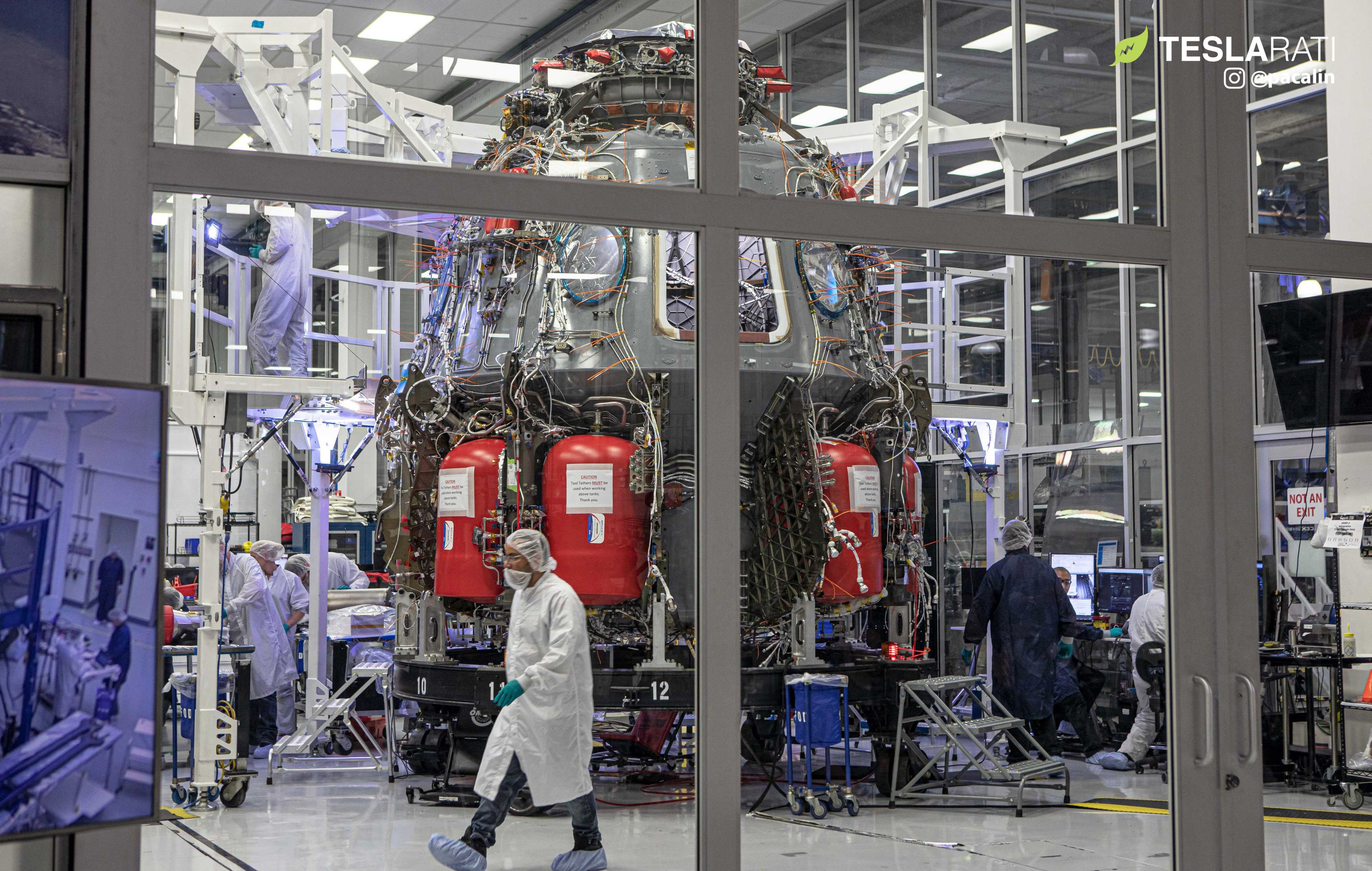

News
SpaceX’s Crew Dragon explosion response praised by NASA in new briefing
During a recent NASA council meeting, SpaceX’s response to a Crew Dragon capsule’s April 20th explosion was repeatedly praised by the agency’s senior Commercial Crew Program (CCP) manager, her optimism clearly rekindled after several undeniably challenging months.
On October 29th and 30th, NASA held its second 2019 Advisory Council (NAC) meeting, comprised of a number of (more or less) independent advisors who convene to receive NASA updates and provide a sort of third-party opinion on the agency’s programs. Alongside NASA’s SLS rocket and Orion spacecraft, Commercial Crew continues to be a major priority for NASA and is equally prominent in NAC meetings, where program officials present updates.
On October 30th, CCP manager Kathy Lueders presented one such update on the progress being made by Commercial Crew providers Boeing and SpaceX, both of which are just weeks away from multiple crucial tests. Boeing is scheduled to perform a pad abort test of its Starliner spacecraft as early as November 4th, while SpaceX is targeting a static fire of a Crew Dragon capsule on November 6th. If that test fire is successful, the same capsule could be ready to support SpaceX’s In-Flight Abort (IFA) test in early-December, and Boeing’s Starliner could attempt its orbital launch debut (OFT) no earlier than (NET) December 17th.
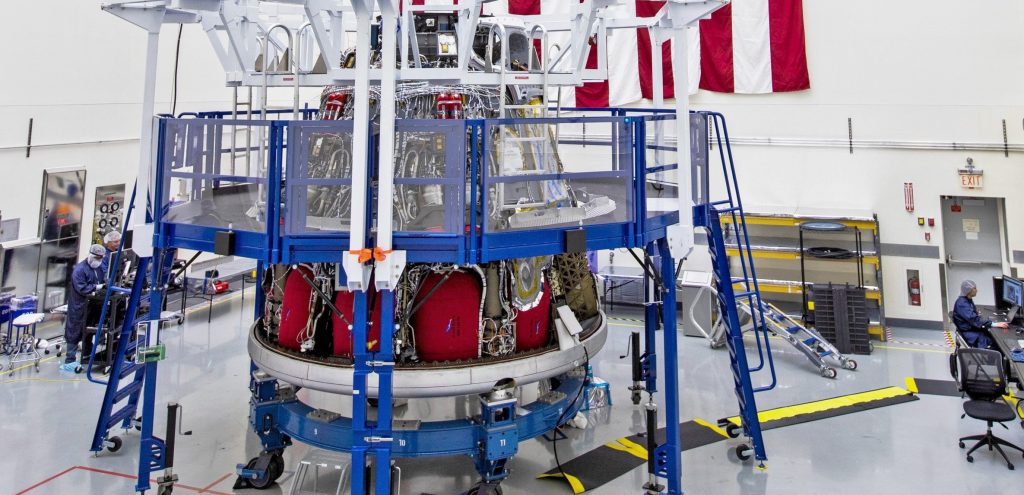
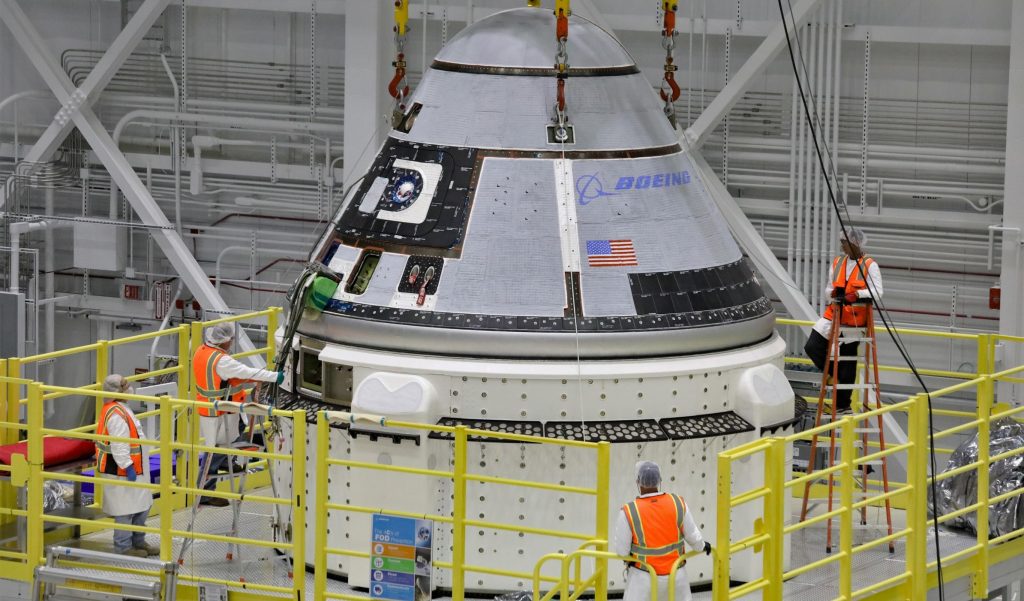
For both SpaceX and Boeing, the results of their respective In-Flight Abort and Orbital Flight Test will determine just how soon NASA will certify each company to attempt their first commercial launches with astronauts aboard. If Boeing’s Pad Abort goes perfectly and Starliner’s NET December 17th OFT is also a total success, the company could be ready for its Crewed Flight Test (CFT) anywhere from 3-6+ months after (March-June 2020).
If SpaceX’s IFA test goes perfectly next month, Crew Dragon’s Demo-2 astronaut launch could occur as early as February or March 2020. In April 2019, SpaceX suffered a major setback when flight-proven Crew Dragon capsule C201 violently exploded milliseconds before a planned abort thruster static fire test, reducing the historic spacecraft to a field of debris. Before that failure, C201 had been assigned to perform the in-flight abort test, while capsule C205 was in the late stages of assembly for Demo-2.
Had that explosion never happened and the C201 IFA gone perfectly, Demo-2 could have potentially been ready for launch as early as August or September 2019. Instead, C201’s demise forced SpaceX to change capsule assignments, reassigning C205 to support Crew Dragon’s IFA, while C206 was moved to Demo-2. Nevertheless, as both SpaceX and NASA officials have noted, C201’s on-pad explosion has been viewed as a gift, for the most part, as the capsule failed in a largely controlled and highly-instrumented environment.
In fact, NASA manager Kathy Lueders complimented NASA’s involvement in the anomaly resolution process and repeatedly praised SpaceX’s response to Dragon’s explosion. Although the explosion was an undesirable result, SpaceX’s relentless prioritization flight hardware testing prevented a failure from occurring in flight. Performed alongside NASA, SpaceX’s subsequent investigations and experimentation have essentially brought to light a new design constraint, the knowledge of which many space agencies and companies will likely benefit from.
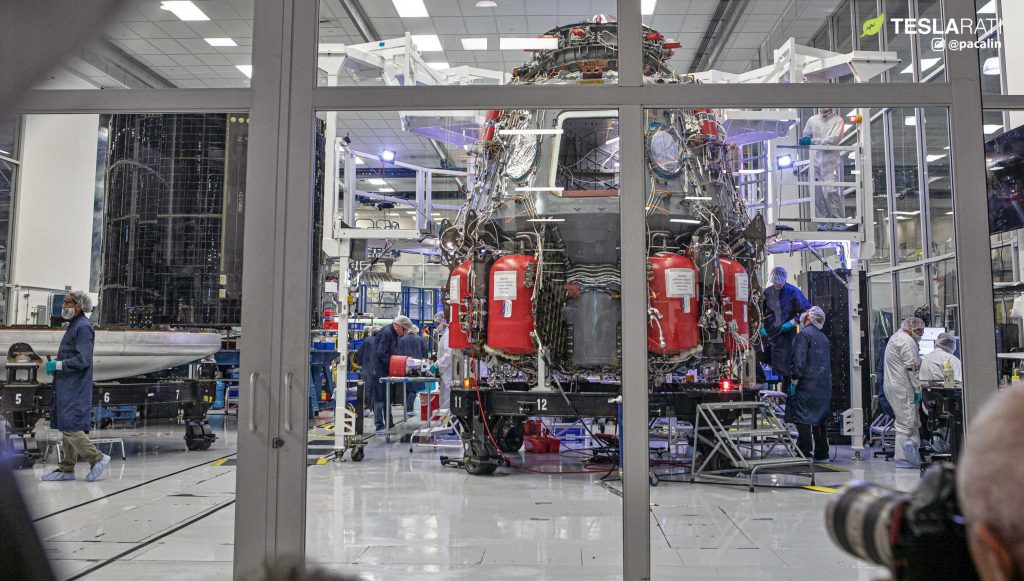
Most notably, however, Lueders detailed how impressed she was at the incredible speed with which SpaceX was able to respond to Crew Dragon’s catastrophic static fire anomaly.
“So the nice thing is that the SpaceX folks had a bunch of vehicles in flow. So even though we lost Demo-1 [capsule C201], … [SpaceX] was able to pull up what was going to be our Demo-2 vehicle, outfit it, make [necessary] changes [and upgrades] to the vehicle, and get it ready for [flight] with a six-month slip — a pretty phenomenal turnaround.“
Kathy Lueders – NASA – 10/30/19
Crew Dragon C201 exploded on April 20th, 2019. Five months and seven days later, a new Crew Dragon capsule and trunk – having undergone significant modifications as a result of the C201 explosion investigation – were delivered to SpaceX’s Florida facilities for their new role, Dragon’s In-Flight Abort test. Meanwhile, despite the upset and general instability, Crew Dragon capsule C206 – previously assigned to the flight after Demo-2 – is in the late stages of assembly and integration and is expected to ship to Florida for preflight preparations in early-December.
Altogether, those turnaround times are almost unheard of for such complex systems. For example, Boeing’s Starliner service module – generally less complex than the crew capsule – suffered a serious anomaly during a June 2018 static fire test. As a result, Boeing had to fully replace the service module with new hardware and repeat the same test before it could proceed to Starliner’s Pad Abort, at the time expected a few weeks later (Q2 2018).
Like SpaceX, Boeing was forced to cannibalize future launch hardware to re-attempt its static fire test, which was ultimately completed some 11 months after the anomaly on May 24th, 2019. The Pad Abort previously expected in mid-2018 is now expected no earlier than November 4th, 2019, a delay of 12-16 months. In simpler terms, the six or so months that Crew Dragon C201’s explosion has delayed SpaceX’s In-Flight Abort test is an undeniably “phenomenal turnaround” relative to both NASA’s expectations and SpaceX’s peers.
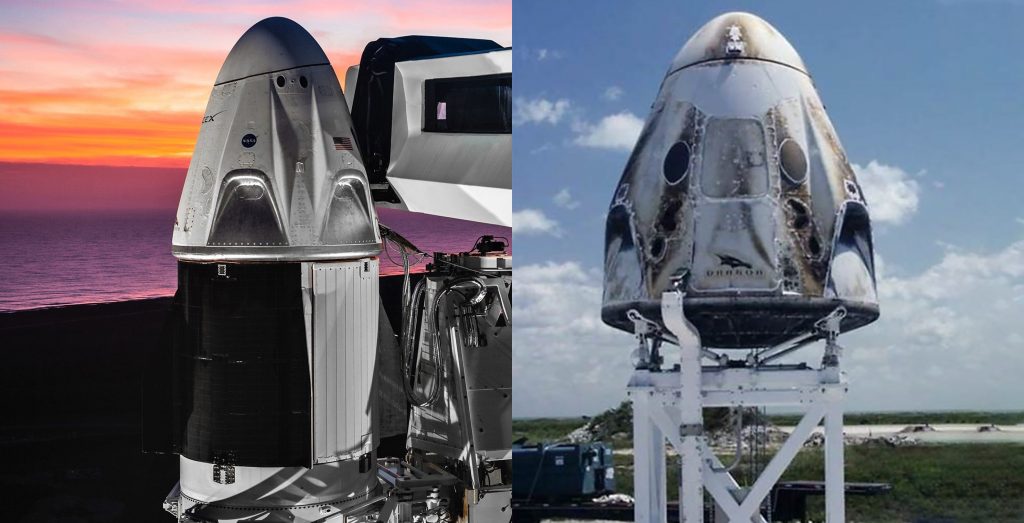
A happy partnership
The day prior, famed ex-NASA engineer and Space Shuttle program manager Wayne Hale – now serving as NAC chair – brought up SpaceX in an entirely different context, deeming the company as a whole a “sterling example” of NASA’s ability to incubate and incentivize commercial spaceflight.
Indeed, SpaceX has radically reshaped almost every aspect of the global spaceflight industry in the ten years since NASA awarded the company its first major contract, proving that orbital-class commercial rockets can be built, landed, and reused – all for far less money than NASA or competitors believed was possible.
All things considered, NASA appears to be more content than ever with the results its fruitful SpaceX partnerships are producing, and a number of senior NASA officials seem to be increasingly willing to unbridle their enthusiasm as a result.
Check out Teslarati’s Marketplace! We offer Tesla accessories, including for the Tesla Cybertruck and Tesla Model 3.
News
Tesla launches in India with Model Y, showing pricing will be biggest challenge
Tesla finally got its Model Y launched in India, but it will surely come at a price for consumers.

Tesla has officially launched in India following years of delays, as it brought its Model Y to the market for the first time on Tuesday.
However, the launch showed that pricing is going to be its biggest challenge. The all-electric Model Y is priced significantly higher than in other major markets in which Tesla operates.
On Tuesday, Tesla’s Model Y went up for sale for 59,89,000 rupees for the Rear-Wheel Drive configuration, while the Long Range Rear-Wheel Drive was priced at 67,89,000.
This equates to $69,686 for the RWD and $78,994 for the Long Range RWD, a substantial markup compared to what these cars sell for in the United States.
🚨 Here’s the difference in price for the Tesla Model Y in the U.S. compared to India.
🚨 59,89,000 is $69,686
🚨 67,89,000 is $78,994 pic.twitter.com/7EUzyWLcED— TESLARATI (@Teslarati) July 15, 2025
Deliveries are currently scheduled for the third quarter, and it will be interesting to see how many units they can sell in the market at this price point.
The price includes tariffs and additional fees that are applied by the Indian government, which has aimed to work with foreign automakers to come to terms on lower duties that increase vehicle cost.
Tesla Model Y seen testing under wraps in India ahead of launch
There is a chance that these duties will be removed, which would create a more stable and affordable pricing model for Tesla in the future. President Trump and Indian Prime Minister Narendra Modi continue to iron out those details.
Maharashtra Chief Minister Devendra Fadnavis said to reporters outside the company’s new outlet in the region (via Reuters):
“In the future, we wish to see R&D and manufacturing done in India, and I am sure at an appropriate stage, Tesla will think about it.”
It appears to be eerily similar to the same “game of chicken” Tesla played with Indian government officials for the past few years. Tesla has always wanted to enter India, but was unable to do so due to these import duties.
India wanted Tesla to commit to building a Gigafactory in the country, but Tesla wanted to test demand first.
It seems this could be that demand test, and the duties are going to have a significant impact on what demand will actually be.
Elon Musk
Tesla ups Robotaxi fare price to another comical figure with service area expansion
Tesla upped its fare price for a Robotaxi ride from $4.20 to, you guessed it, $6.90.

Tesla has upped its fare price for the Robotaxi platform in Austin for the first time since its launch on June 22. The increase came on the same day that Tesla expanded its Service Area for the Robotaxi ride-hailing service, offering rides to a broader portion of the city.
The price is up from $4.20, a figure that many Tesla fans will find amusing, considering CEO Elon Musk has used that number, as well as ’69,’ as a light-hearted attempt at comedy over the past several years.
Musk confirmed yesterday that Tesla would up the price per ride from that $4.20 point to $6.90. Are we really surprised that is what the company decided on, as the expansion of the Service Area also took effect on Monday?
But the price is now a princely $6.90, as foretold in the prophecy 😂
— Elon Musk (@elonmusk) July 14, 2025
The Service Area expansion was also somewhat of a joke too, especially considering the shape of the new region where the driverless service can travel.
I wrote yesterday about how it might be funny, but in reality, it is more of a message to competitors that Tesla can expand in Austin wherever it wants at any time.
Tesla’s Robotaxi expansion wasn’t a joke, it was a warning to competitors
It was only a matter of time before the Robotaxi platform would subject riders to a higher, flat fee for a ride. This is primarily due to two reasons: the size of the access program is increasing, and, more importantly, the service area is expanding in size.
Tesla has already surpassed Waymo in Austin in terms of its service area, which is roughly five square miles larger. Waymo launched driverless rides to the public back in March, while Tesla’s just became available to a small group in June. Tesla has already expanded it, allowing new members to hail a ride from a driverless Model Y nearly every day.
The Robotaxi app is also becoming more robust as Tesla is adding new features with updates. It has already been updated on two occasions, with the most recent improvements being rolled out yesterday.
Tesla updates Robotaxi app with several big changes, including wider service area
News
Tesla Model Y and Model 3 dominate U.S. EV sales despite headwinds
Tesla’s two mainstream vehicles accounted for more than 40% of all EVs sold in the United States in Q2 2025.

Tesla’s Model Y and Model 3 remained the top-selling electric vehicles in the U.S. during Q2 2025, even as the broader EV market dipped 6.3% year-over-year.
The Model Y logged 86,120 units sold, followed by the Model 3 at 48,803. This means that Tesla’s two mainstream vehicles accounted for 43% of all EVs sold in the United States during the second quarter, as per data from Cox Automotive.
Tesla leads amid tax credit uncertainty and a tough first half
Tesla’s performance in Q2 is notable given a series of hurdles earlier in the year. The company temporarily paused Model Y deliveries in Q1 as it transitioned to the production of the new Model Y, and its retail presence was hit by protests and vandalism tied to political backlash against CEO Elon Musk. The fallout carried into Q2, yet Tesla’s two mass-market vehicles still outsold the next eight EVs combined.
Q2 marked just the third-ever YoY decline in quarterly EV sales, totaling 310,839 units. Electric vehicle sales, however, were still up 4.9% from Q1 and reached a record 607,089 units in the first half of 2025. Analysts also expect a surge in Q3 as buyers rush to qualify for federal EV tax credits before they expire on October 1, Cox Automotive noted in a post.
Legacy rivals gain ground, but Tesla holds its commanding lead
General Motors more than doubled its EV volume in the first half of 2025, selling over 78,000 units and boosting its EV market share to 12.9%. Chevrolet became the second-best-selling EV brand, pushing GM past Ford and Hyundai. Tesla, however, still retained a commanding 44.7% electric vehicle market share despite a 12% drop in in Q2 revenue, following a decline of almost 9% in Q1.
Incentives reached record highs in Q2, averaging 14.8% of transaction prices, roughly $8,500 per vehicle. As government support winds down, the used EV market is also gaining momentum, with over 100,000 used EVs sold in Q2.
Q2 2025 Kelley Blue Book EV Sales Report by Simon Alvarez on Scribd
-

 News3 days ago
News3 days agoTesla debuts hands-free Grok AI with update 2025.26: What you need to know
-

 Elon Musk1 week ago
Elon Musk1 week agoElon Musk confirms Grok 4 launch on July 9 with livestream event
-

 Elon Musk6 days ago
Elon Musk6 days agoxAI launches Grok 4 with new $300/month SuperGrok Heavy subscription
-

 News2 weeks ago
News2 weeks agoTesla Model 3 ranks as the safest new car in Europe for 2025, per Euro NCAP tests
-

 Elon Musk2 weeks ago
Elon Musk2 weeks agoxAI’s Memphis data center receives air permit despite community criticism
-

 News5 days ago
News5 days agoTesla begins Robotaxi certification push in Arizona: report
-

 Elon Musk2 weeks ago
Elon Musk2 weeks agoTesla reveals it is using AI to make factories more sustainable: here’s how
-

 Elon Musk2 weeks ago
Elon Musk2 weeks agoTesla scrambles after Musk sidekick exit, CEO takes over sales


















